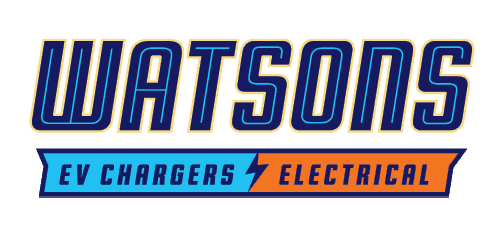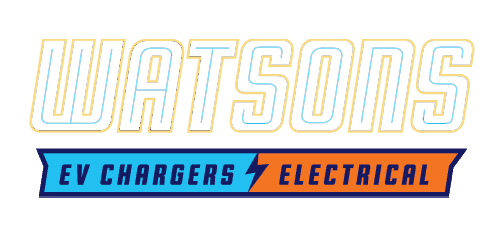The Role of Electrification in Sustainable Urban Planning and Development
3 Benefits and Challenges of Electrification for Communities
Communities all over the world are experiencing rapid population growth. This leads to increased challenges in urban areas like traffic congestion, air pollution, and energy insecurity. In response to the growing demands and as more people move to urban areas, many cities are turning to electrification as a solution—a transition from fossil fuels to renewable energy.
Electrification offers numerous benefits, such as reducing greenhouse gas emissions, increasing energy efficiency, and driving economic growth, all while improving the lives of community members. While electrification offers tremendous advantages, it also comes with its own set of challenges. These challenges require supportive policies, technological innovation, and proper planning.
As one of the leading electrification teams in the Gilroy, CA, area of Santa Clara Valley, Watson’s Charging Stations & Electric is leading the charge in electrification. We are here to help businesses and homeowners move toward a greener future, lower utility bills, and a bright outlook through electrification initiatives.
Read on about the electrification movement and its role in sustainable urban planning and development.
What Is Electrification?
Electrification refers to the transition from fossil fuels to renewable electricity. The electrification movement is more than just a few houses going solar or installing more efficient appliances. It involves converting cities and technologies to run on electricity instead of oil, gas, or coal. The overarching goal of electrification is transitioning to electric vehicles, transit, heat pumps, microgrids, and other sustainable technologies powered by renewable energies.
By replacing fossil fuels with renewable electricity, cities can reduce emissions and pollution and increase efficiency and affordability. Electrification is critical to mitigating and adapting to climate change. Overall, it helps build communities in harmony with the planet.
Electrification’s Role in Sustainable Urban Planning and Development
Community leaders and developers must address various challenges as cities and populations grow. Electrification can play an integral role in building eco-friendly and sustainable communities. Here are the top three ways electrification impacts urban planning and development:
Reducing Emissions and Pollution Through Electrification
The transportation and building sectors produce over 60% of urban emissions. Electrifying these areas is crucial to mitigating climate change and protecting public health. Converting all vehicles and buildings to run on renewable electricity could cut city-wide emissions exponentially compared to conventional electrical systems.
Many cities worldwide have started transitioning public buses to electric vehicles, demonstrating how this approach can work. Homes and buildings can also significantly reduce emissions using electric heat pumps, smart thermostats, and other efficient technologies.
Building Smarter and More Resilient Energy Systems
Electrification can also exist through smart grids, microgrids, and distributed energy resources like solar panels and batteries. Microgrids provide backup power for hospitals, fire stations, and other critical infrastructure during outages. Smart meters help balance electricity supply and demand in real time, reducing waste. Cities like Austin, Texas, have installed smart meters and offer variable pricing to encourage efficient energy usage during peak periods.
Driving Social and Economic Benefits
Worldwide, over one billion people lack access to reliable electricity, hindering development. Mini-grids and off-grid renewable systems can provide electrification to rural and low-income communities. This added access to power allows for more significant economic innovation and inclusion.
Installing electric vehicle charging stations also creates jobs in the clean technology sector. Studies show that electrification improves income, health, and education. Rural electrification in Rwanda led to 15% income increases on average due to greater economic activity.
Challenges of Electrification in Cities
While electrification provides substantial benefits, significant barriers to implementation still exist. For example, upgrading infrastructure requires essential investments, and new technologies can be costly. Unfortunately, stakeholders may resist change, which means electrification in rural and low-income areas may require specialized solutions. Policymakers must address these challenges through incentives, standards, and community engagement.
The Role of Public Policy in Electrification
Public policy is crucial in supporting electrification by incentivizing investment and creating supportive standards. The Inflation Reduction Act (IRA), signed in the fall of 2022, is one of the most extensive federal programs that supports electrification. Homeowners can enjoy numerous tax breaks and incentives for making eco-friendly home upgrades.
However, overly restrictive policies can reduce the opportunity for growth. For example, the IRA allows point-of-sale rebates for new and used electric vehicle purchases. Unfortunately, the strict rules make it so that few EVs actually qualify for the incentives. Policymakers must consider the larger picture when developing laws, policies, and incentive plans.
Environmental Impact of Electrification
While electrification reduces emissions, producing and disposing of batteries can negatively impact the environment. Opponents of electrification focus on the environmental impacts of renewable energies as a reason against spreading this technology.
Policymakers are in a tough spot balancing the need for renewable energies and the responsible development and disposal of new tech. They should also consider a push toward establishing responsible recycling programs to help foster the transition to electrification.
Social Justice and Electrification
Access to affordable, reliable energy is a fundamental human right, yet access is unequal globally. Electrification can promote equity by providing marginalized groups with life-improving opportunities. If this new technology is implemented unequally or unfairly, electrification could further divide groups. Solutions must fit communities’ needs and account for their various geographical, financial, and social barriers.
Watson’s Charging Stations & Electric: Leaders in Electrification
Electrification on a macro scale will take a great deal of work from community leaders and policymakers. As communities grow, urban planners must consider how electrification can help improve life while reducing negative environmental impacts.
On the micro level, individual home and business owners can take steps to join the electrification movement, lower their energy costs, and improve their eco-friendliness—from installing smart meters to manage their electrical use to upgrading to more eco-conscious appliances.
If you are interested in learning more about how you can do your part to help build more sustainable communities, join the electrification movement, or upgrade your property, let Watson’s Charging Stations & Electric be your guide. We can handle all your electrical needs and point you in the right direction to make a real difference in urban planning. Contact us to schedule your free consultation today.


